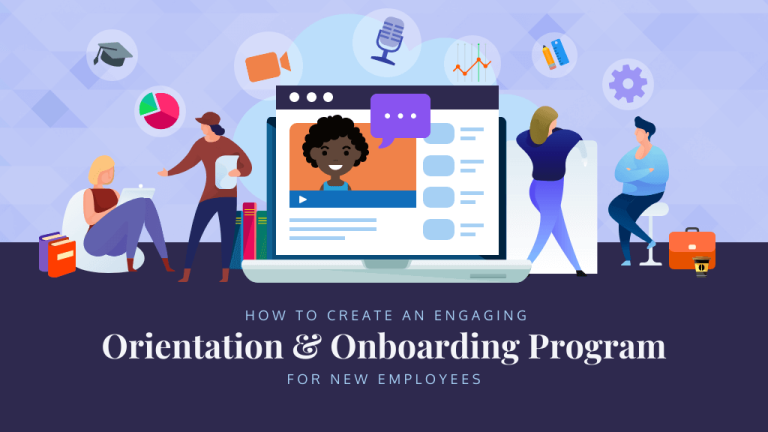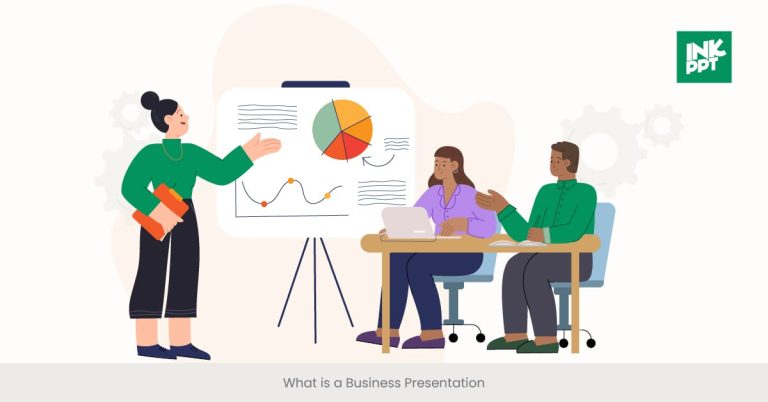What Is A Good Introduction For A Presentation?
Are you struggling to capture your audience’s attention with your presentation introduction? Look no further! In this article, we will explore the key elements of a good introduction that will leave a lasting impression on your audience. From a compelling opening line to a clear statement of purpose, we will provide you with practical tips to ensure your presentation starts off on the right foot. So, let’s dive in and discover how to hook your audience from the very beginning!
Have you ever wondered what makes a presentation introduction truly engaging? An effective introduction can make or break your presentation, setting the tone for what’s to come. To captivate your audience’s attention, it’s crucial to craft an opening that is both compelling and concise. In this article, we will guide you through the essential components of a good introduction, equipping you with the tools to make a memorable impact on your audience. Get ready to discover the art of captivating your listeners right from the start!
A good introduction for a presentation sets the tone and grabs the audience’s attention. Start with a compelling opening statement or a thought-provoking question. Provide a brief overview of the topic and its significance. You can also share a relevant anecdote or use visual aids to engage the audience right from the start.
What is a good introduction for a presentation?
A good introduction for a presentation is one that captivates the audience’s attention and sets the tone for the rest of the presentation. It should be concise, engaging, and leave a lasting impression. There are several effective ways to start a presentation:
1. Storytelling: Begin with a relevant and compelling anecdote that relates to the topic of your presentation. This can help create an emotional connection with the audience and make them more receptive to your message.
2. Startling Statistic: Share a surprising or thought-provoking statistic that highlights the importance or relevance of your topic. This can grab the audience’s attention and make them curious to learn more.
3. Provocative Question: Pose a stimulating question that challenges the audience’s thinking or makes them reflect on the topic. This can encourage active participation and engagement right from the start.
4. Quotation: Begin with a powerful quote from a notable figure or expert in your field. This can lend credibility to your presentation and provide a fresh perspective on the topic.
5. Visual Hook: Use a visually captivating image, video, or prop that immediately grabs the audience’s attention and creates curiosity about what you will discuss. This can create a memorable and impactful start to your presentation.
How can you make your introduction more engaging?
To make your introduction more engaging, it is important to consider the following strategies:
1. Be Clear and Concise: Keep your introduction brief and to the point. Avoid unnecessary details and focus on providing a clear overview of what the audience can expect from your presentation.
2. Use a Strong Opening Statement: Craft a compelling opening statement that captures the audience’s attention and generates curiosity. This can be a bold statement, a surprising fact, or a thought-provoking question.
3. Connect with the Audience: Establish a connection with your audience by relating your topic to their interests, needs, or experiences. This can create a sense of relevance and make them more invested in your presentation.
4. Include a Preview of the Presentation: Give the audience a sneak peek into what you will cover in your presentation. This can create anticipation and help them understand the value they will gain by listening to your talk.
5. Use Visuals and Multimedia: Incorporate visually appealing slides, videos, or other multimedia elements in your introduction to make it more engaging and interactive. This can help hold the audience’s attention and enhance their understanding of your topic.
What are some common mistakes to avoid in a presentation introduction?
When delivering a presentation, it is important to avoid these common mistakes in the introduction:
1. Starting with Apologies: Avoid beginning your presentation with unnecessary apologies or disclaimers. This can undermine your confidence and set a negative tone for the rest of the talk.
2. Being Overly Generic: Steer clear of generic and clichéd openings that fail to capture the audience’s attention. Instead, strive for a unique and memorable introduction that stands out.
3. Providing Excessive Background Information: While some context is necessary, avoid overwhelming the audience with excessive background information in the introduction. Focus on the main points and save the details for later in the presentation.
4. Using Jargon or Complex Language: Keep your language simple and accessible, avoiding technical jargon or complex terms that may confuse or alienate the audience. Use clear and straightforward language that everyone can understand.
5. Neglecting to Rehearse: Lack of preparation can lead to a disorganized and ineffective introduction. Practice your introduction beforehand to ensure a smooth delivery and confident start to your presentation.
How long should a presentation introduction be?
The length of a presentation introduction can vary depending on various factors such as the overall duration of the presentation and the complexity of the topic. However, as a general guideline, a presentation introduction should typically be kept relatively short. Aim for an introduction that takes around 10% of the total presentation time.
This means that for a 10-minute presentation, the introduction should be approximately one minute long. For a longer presentation, such as a 30-minute talk, the introduction can be around three minutes. It is crucial to be mindful of the time and ensure that the introduction does not overshadow the rest of the presentation.
Remember, the introduction serves as a teaser, setting the stage for what is to come. It should grab the audience’s attention, provide a brief overview of the topic, and generate interest and curiosity. Keep it concise, engaging, and focused on captivating the audience from the very beginning.
Why is a strong introduction important in a presentation?
A strong introduction is vital in a presentation for several reasons:
1. Capturing Attention: The beginning of a presentation is the critical moment when you have the audience’s undivided attention. A strong introduction helps capture their interest and encourages them to stay engaged throughout the presentation.
2. Setting Expectations: A well-crafted introduction sets clear expectations for what the audience can expect from the presentation. It provides an overview of the topic, establishes the purpose of the talk, and helps orient the audience to the main ideas that will be discussed.
3. Creating Engagement: A strong introduction helps create a connection between the presenter and the audience. It encourages active participation, stimulates curiosity, and invites the audience to become invested in the topic.
4. Building Credibility: An effective introduction establishes the presenter’s credibility and expertise on the subject matter. It provides a glimpse into the presenter’s qualifications, knowledge, or experience, which helps build trust and confidence in the audience.
5. Setting the Tone: The introduction sets the tone for the entire presentation. It can create a sense of excitement, seriousness, or enthusiasm depending on the topic and desired outcome. A strong introduction sets the right mood and prepares the audience for what is to come.
How can you grab the audience’s attention in the first few seconds of a presentation?
To grab the audience’s attention in the first few seconds of a presentation, consider the following techniques:
1. Start with a Bold Statement: Begin your presentation with a powerful and attention-grabbing statement that immediately captures the audience’s interest. Make it bold, controversial, or surprising to create intrigue and curiosity.
2. Use a Visual Hook: Incorporate a visually striking image, video, or prop that instantly captures the audience’s attention. Visuals are highly effective in drawing people in and creating curiosity about what you will discuss.
3. Pose a Thought-Provoking Question: Ask a thought-provoking question that challenges the audience’s thinking or makes them reflect on the topic. This can instantly engage their minds and encourage active participation.
4. Share an Intriguing Fact or Statistic: Begin with a surprising or little-known fact or statistic that relates to your topic. This can pique the audience’s curiosity and make them eager to learn more.
5. Tell a Compelling Story: Start with an engaging anecdote or story that connects with your topic and evokes emotions. This can captivate the audience’s attention and create an emotional connection right from the start.
What is the purpose of an introduction in a presentation?
The purpose of an introduction in a presentation is multi-fold:
1. Establishing Context: The introduction provides essential context to help the audience understand the relevance and importance of the topic you will be discussing. It helps set the stage and prepares the audience for what is to come.
2. Capturing Attention: An introduction is the first opportunity to grab the audience’s attention and make them interested in your presentation. It should be engaging, captivating, and intriguing to encourage the audience to stay focused and attentive.
3. Outlining the Presentation: The introduction gives an overview of the main points or structure of the presentation. It acts as a roadmap, helping the audience understand the flow of the talk and what they can expect to learn or gain from it.
4. Building Rapport: A well-crafted introduction can help establish a connection and build rapport between the presenter and the audience. It allows the audience to get to know the speaker, understand their expertise, and feel more comfortable and engaged throughout the presentation.
5. Generating Interest: The introduction serves as a teaser, generating interest and curiosity about the topic. It should create a desire in the audience to learn more and keep them eager for what will be revealed during the presentation.
What are some tips for delivering an effective presentation introduction?
To deliver an effective presentation introduction, consider the following tips:
1. Practice and Rehearse: Practice your introduction several times to ensure a smooth delivery. Rehearsing helps build confidence and familiarity with the content, allowing you to engage the audience more effectively.
2. Use Body Language: Pay attention to your body language during the introduction. Maintain good posture, make eye contact with the audience, and use gestures to convey confidence and enthusiasm.
3. Speak with Energy and Enthusiasm: Infuse your introduction with energy and enthusiasm to engage the audience. Use vocal variety, emphasize key points, and project your voice to command attention and convey your passion for the topic.
4. Be Authentic and Genuine: Be yourself and let your personality shine through. Authenticity helps build trust and connection with the audience, making them more receptive to your message.
5. Maintain a Positive Tone: Keep the tone of your introduction positive and optimistic. Create a welcoming and inclusive atmosphere that encourages the audience to engage with your presentation.
What is the main objective of a presentation introduction?
The main objective of a presentation introduction is to capture the attention of the audience and create interest, setting the stage for the rest of the presentation. It should engage the audience, provide context, and generate curiosity about the topic being discussed.
The introduction serves as a bridge between the audience’s current knowledge or understanding and the new information you will present. It should give a clear overview of the main points, establish the purpose of the talk, and create a connection between the presenter and the audience.
Ultimately, the objective of a presentation introduction is to create a positive and memorable first impression, making the audience eager to listen, learn, and actively participate throughout the presentation.
What are some effective techniques for creating a memorable introduction?
To create a memorable introduction for a presentation, consider these effective techniques:
1. Tell a Personal Story: Share a personal anecdote or experience related to the topic. Personal stories are relatable and can create an emotional connection with the audience.
2. Use Humor: Incorporate humor into your introduction to lighten the mood and create a positive atmosphere. A well-placed joke or humorous observation can make the introduction memorable and engaging.
3. Ask for Audience Participation: Encourage audience participation by asking a question or conducting a quick poll related to the topic. This can make the introduction interactive and create a sense of engagement right from the start.
4. Utilize Visuals: Incorporate visually appealing elements such as images, videos, or props that are relevant to your topic. Visuals can capture the audience’s attention and make the introduction more memorable.
5. Use a Memorable Quote: Start with a memorable quote from a renowned figure or expert that relates to your topic. A powerful quote can inspire and resonate with the audience, making your introduction more memorable.
How can you make your presentation introduction more relatable to the audience?
To make your presentation introduction more relatable to the audience, consider the following strategies:
1. Understand Your Audience: Research and understand your audience’s demographics, interests, and needs. Tailor your introduction to address their specific concerns or challenges.
2. Use Relevant Examples: Incorporate relatable examples or case studies that illustrate the relevance of your topic to the audience’s lives or work. This helps them see the practical application and value of your presentation.
3. Highlight Common Ground: Identify shared experiences, values, or goals between you and the audience. Emphasize these points of connection to create a sense of unity and make your introduction more relatable.
4. Share Personal Experiences: Share personal stories or experiences that relate to the topic and demonstrate empathy with the audience. This helps create a bond and makes your introduction more relatable and authentic.
5. Use Language and Tone that Resonates: Adapt your language and tone to match the audience’s preferences and communication style. Use familiar terms and avoid jargon that may alienate or confuse the audience.
What are some effective ways to engage the audience in the introduction?
To engage the audience in the introduction of your presentation, consider these effective techniques:
1. Ask Thought-Provoking Questions: Pose questions that encourage the audience to reflect on the topic or share their opinions. This stimulates engagement and invites active participation from the audience.
2. Conduct a Brief Poll or Survey: Start with a quick poll or survey related to the topic of your presentation. This not only engages the audience but also provides valuable insights or data that you can refer to later.
3. Incorporate Interactive Elements: Use interactive elements such as live demonstrations, audience participation activities, or multimedia tools to actively involve the audience. This creates a dynamic and engaging environment.
4. Encourage Q&A: Invite the audience to ask questions during or after the introduction. This fosters engagement, shows that you value their input, and encourages active involvement throughout the presentation.
5. Share Compelling Stories: Begin with a captivating story or case study that resonates with the audience. Stories evoke emotions and captivate attention, making the introduction more engaging and memorable.
What should be included in the introduction of a formal presentation?
The introduction of a formal presentation should include the following elements:
1. Greeting and Opening Remarks: Start by greeting the audience and introducing yourself. Provide a brief background or credentials, if necessary.
2. Topic Introduction: Clearly state the topic of your presentation and its significance. Explain why it is important and relevant to the audience.
3. Purpose and Objectives: Clearly articulate the purpose and objectives of your presentation. Let the audience know what you aim to achieve and what they can expect to gain from listening to your talk.
4. Agenda Overview: Provide a concise overview of the main points or structure of your presentation. This helps the audience understand the flow of the talk and what will be covered.
5. Transition to the Body: End the introduction by smoothly transitioning to the main body of your presentation. This can be done by summarizing the key points or by using a transitional statement that links the introduction to the next section.
Why is it important to tailor your introduction to the specific audience?
Tailoring your introduction to the specific audience is crucial for several reasons:
1. Relevance: An audience is more likely to engage and pay attention if they perceive the information as relevant to their needs, interests, or situations. Tailoring the introduction ensures that you address their specific concerns or challenges.
2. Connection: By customizing the introduction, you can establish a connection with the audience. This helps build rapport, trust, and credibility, making the audience more receptive to your message.
3. Attention: Tailoring the introduction to the audience’s background or experiences can capture their attention and demonstrate that you understand their unique context. This encourages active listening and engagement throughout the presentation.
4. Impact: A tailored introduction creates a stronger impact on the audience. It shows that you have taken the time to understand their needs and have crafted a presentation specifically for them, increasing the chances of a meaningful and memorable experience.
5. Personalization: Tailoring the introduction allows you to personalize your presentation and make it more relatable. This helps create a connection with the audience,
How to Start your Presentation: 4 Step Formula for a Killer Intro
In conclusion, a good introduction is crucial for setting the tone and capturing the attention of your audience during a presentation. By following a few key guidelines, you can ensure that your introduction is engaging and effective.
Firstly, it is important to start your presentation with a strong opening statement or a thought-provoking question. This will immediately grab the attention of your audience and make them eager to hear more. By starting off with something compelling, you can create a sense of curiosity and intrigue, setting the stage for an engaging presentation.
Secondly, a good introduction should provide a clear overview of what will be discussed in the presentation. This helps the audience understand the purpose and structure of your talk, making it easier for them to follow along and stay engaged. By providing a roadmap of the key points you will cover, you can help your audience anticipate the information they will gain from your presentation.
Lastly, it is important to establish a connection with your audience right from the start. This can be done by sharing a personal anecdote or relating the topic to their experiences or interests. By making your introduction relatable and relevant to your audience, you can capture their attention and make them feel more invested in what you have to say.
In summary, a good introduction for a presentation should be attention-grabbing, provide an overview of the content, and establish a connection with the audience. By following these guidelines, you can create an engaging and impactful introduction that sets the stage for a successful presentation.




